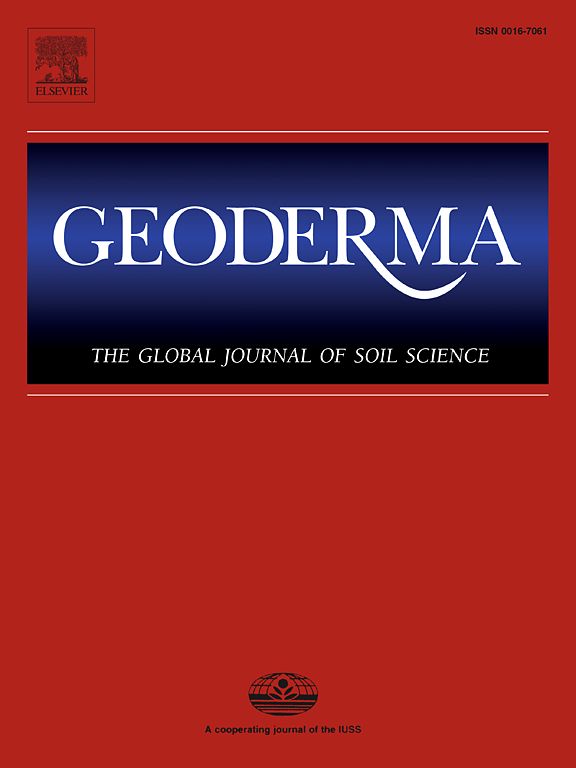地下水位对未扰动泥炭岩心温室气体排放的影响
IF 5.6
1区 农林科学
Q1 SOIL SCIENCE
引用次数: 0
摘要
泥炭土储存了全球土壤碳储量的很大一部分,当泥炭土被抽干并用于耕种时,这些碳储量可能会流失,从而导致二氧化碳排放和土地沉降。有人建议通过地下水位(GWL)管理来缓解泥炭氧化,但这可能会导致一氧化二氮(N2O)和甲烷(CH4)排放量增加。本文章由计算机程序翻译,如有差异,请以英文原文为准。
Groundwater level effects on greenhouse gas emissions from undisturbed peat cores
Peat soils store a large part of the global soil carbon stock, which can potentially be lost when they are drained and taken into cultivation, resulting in CO2 emission and land subsidence. Groundwater level (GWL) management has been proposed to mitigate peat oxidation, but may lead to increased emissions of nitrous oxide (N2O) and methane (CH4).
The aim of this experiment was to study trade-offs between greenhouse gas emissions from peat soils as a function of GWL. We incubated 1 m deep, 24 cm diameter undisturbed bare soil cores, after removal of the grass layer, from three contrasting Dutch grassland peat sites for 370 days at 16 °C. The cores were subjected to drying-wetting cycles, with the GWL varying between near the soil surface to 160 cm below the surface. We measured gas fluxes of CO2, N2O and CH4 from the soil surface, extracted pore water for DOC and mineral nitrogen analysis, and measured soil hydraulic and shrinkage characteristics.
Emissions of CO2 increased after lowering the GWL, but showed different GWL-response curves during rewetting of the soil. On average, highest CO2 emissions of 1.5 g C·m−2 day−1 were found at a GWL of 80 cm below the surface. However, the 0 cm GWL was the only treatment with significantly lower CO2 emissions than other GWLs. Cumulative CO2 emissions differed significantly between sampling sites. Emissions of N2O showed a different response, peaking at GWL heights above −20 cm, particularly after a recent GWL rise. Though not significantly different, the highest N2O emissions were measured at the 0 cm GWL treatment. We confirmed this pattern for N2O in un-replicated soil cores with grass sward, although emission values were lower in these cores due to the root uptake of mineral nitrogen. CH4 emissions or −uptake remained low under any GWL. We conclude that raising the GWL is a successful strategy to reduce CO2 emissions from peat oxidation. However, raising the GWL close to the soil surface could lead to N2O emissions that negate any gains in terms of global warming potential. Our results suggest that raising the GWL in peat grasslands to −20 cm creates such a risk. A constant GWL at the surface (0 cm) would be preferential for mitigating both CO2 and N2O emissions, although such conditions don’t allow for agricultural grass production (mowing or grazing).
求助全文
通过发布文献求助,成功后即可免费获取论文全文。
去求助
来源期刊

Geoderma
农林科学-土壤科学
CiteScore
11.80
自引率
6.60%
发文量
597
审稿时长
58 days
期刊介绍:
Geoderma - the global journal of soil science - welcomes authors, readers and soil research from all parts of the world, encourages worldwide soil studies, and embraces all aspects of soil science and its associated pedagogy. The journal particularly welcomes interdisciplinary work focusing on dynamic soil processes and functions across space and time.
 求助内容:
求助内容: 应助结果提醒方式:
应助结果提醒方式:


